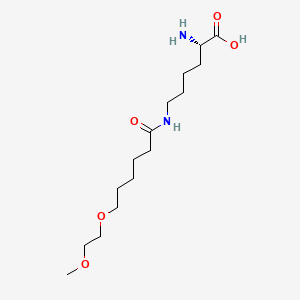In continuation of my update on epinephrine

Kaléo, a privately-held pharmaceutical company, announced that the U.S. Food and Drug Administration (FDA) has approved its supplemental New Drug Application (sNDA) for Auvi-Q (epinephrine injection, USP) 0.1 mg, the first and only epinephrine auto-injector (EAI) specifically designed for the treatment of life-threatening allergic reactions, including anaphylaxis, in infants and small children weighing 16.5 to 33 pounds (7.5 to 15 kilograms) who are at risk for or have a history of serious allergic reactions.

Kaléo, a privately-held pharmaceutical company, announced that the U.S. Food and Drug Administration (FDA) has approved its supplemental New Drug Application (sNDA) for Auvi-Q (epinephrine injection, USP) 0.1 mg, the first and only epinephrine auto-injector (EAI) specifically designed for the treatment of life-threatening allergic reactions, including anaphylaxis, in infants and small children weighing 16.5 to 33 pounds (7.5 to 15 kilograms) who are at risk for or have a history of serious allergic reactions.
The sNDA for the Auvi-Q 0.1 mg Auto-injector was granted Priority Review by the FDA, an expedited regulatory pathway reserved for products that may provide significant improvements in the safety or effectiveness of the treatment, diagnosis, or prevention of serious conditions when compared to available therapies.
Auvi-Q is a compact epinephrine auto-injector with industry-first features, including a voice prompt system that guides a user with step-by-step instructions through the delivery process, and a needle that automatically retracts following administration. The new 0.1 mg-dose epinephrine auto-injector has a shorter needle length and lower dose of epinephrine than current FDA approved 0.15 mg and 0.3 mg epinephrine auto-injectors.
Children are increasingly being treated for anaphylaxis. There was a 129.8 percent increase in emergency room visits for anaphylaxis among children four years old and younger between 2005 and 2014.[i] According to a study published in Allergy, Asthma & Clinical Immunology, 43 percent of children weighing 16.5 pounds (7.5 kilograms) to 33 pounds (15 kilograms) treated with a 0.15 mg EAI having a standard 12.7 mm needle length are at risk of having the needle strike the bone, therefore potentially impacting the administration of epinephrine during a life-threatening emergency.[ii] The needle length in Auvi-Q 0.1 mg was specifically designed for use with infants and small children to help mitigate this safety concern.
“Today’s decision by the FDA to approve the Auvi-Q 0.1 mg Auto-injector is exciting for all of us in the life-threatening allergy community who have been working for many years to fulfill this unmet medical need,” said Spencer Williamson, President and CEO of kaléo. “As a company that focuses on patients first, and providing potentially life-saving treatments, we are particularly glad we will be able to help caregivers by providing an EAI that was specifically designed with an appropriate dose and needle length for infants and children (16.5 to 33 pounds) in order to maximize the potential for a safe administration of epinephrine.”
“The approval of Auvi-Q 0.1 mg will help achieve our goal of working to fulfill unmet medical needs,” said Eric S. Edwards, MD, PhD, Vice President of Innovation and Research & Development at kaléo. “We developed the Auvi-Q 0.1 mg EAI to deliver a dose of epinephrine appropriate to infants and small children weighing 16.5 – 33 pounds, with a shorter needle length to help mitigate the risk of striking bone which could potentially cause injury or interfere with the delivery of epinephrine.”
Only Auvi-Q 0.1 mg has a dose and needle length designed specifically for treating anaphylaxis in infants and small children weighing 16.5 – 33 pounds. Auvi-Q 0.1 mg includes the innovative AUVI-Q electronic voice instruction system as well as visual cues to help guide users step-by-step through the administration.
“The approval of an epinephrine auto-injector specifically designed for infants and small children is timely, especially given the recent changes to guidelines recommending that certain high-risk infants, as young as four to six months old, be introduced to peanut-containing foods,” said Eleanor Garrow-Holding[1], President and CEO of the Food Allergy & Anaphylaxis Connection Team (FAACT). “We are pleased that the pediatric allergy healthcare community and parents of infants and small children with life-threatening allergies will have the ability to obtain an FDA-approved epinephrine auto-injector in the event of an allergic emergency. We look forward to the availability of Auvi-Q 0.1 mg.”
“Until now, healthcare practitioners and caregivers to infants and small children have not had an epinephrine auto-injector with an appropriate dose of epinephrine available to them, potentially causing some delay in the administration of epinephrine in a life-threatening allergic emergency,” said Dr. Vivian Hernandez-Trujillo[1], a pediatric allergist, and fellow of the American Academy of Allergy, Asthma and Immunology; American College of Allergy, Asthma and Immunology; and American Academy of Pediatrics specializing in the management of life-threatening allergies and anaphylaxis. “Having an epinephrine auto-injector with a needle length and dose specifically designed for infants and small children should help alleviate concerns around hitting the bone or injecting too much epinephrine.”
Identical twin brothers, Evan and Eric Edwards, the inventors of Auvi-Q, know what it is like to live with life-threatening allergies, both as patients and parents of food-allergic children. Their goal was to develop an epinephrine auto-injector that contained innovative features, such as a voice instruction system that helps guide patients and caregivers step-by-step through the injection process. Evan and Eric Edwards believe and trust in Auvi-Q, not only for themselves, but also for their children and other families who may have to depend on it to administer epinephrine during an allergic emergency.




